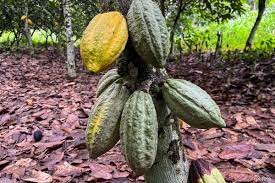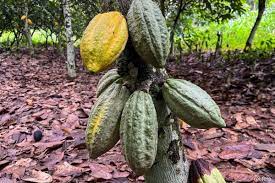
Prices for cocoa and iron ore increased in 2023, but those for coal and natural gas fell. Due to supply shortages and dry weather, most agricultural items are predicted to do better in the New Year than energy and industrial metals.
Following interest rate hikes that slowed global economy and rattled financial markets, the Thomson Reuters/CoreCommodity CRB Excess Return Index, which tracks more than a dozen commodities like copper, gold, sugar, and oil, is expected to decline by 4% in 2023.
Due to limited supply, cocoa prices surged 72% to multi-decade highs, while iron ore prices nearly doubled as China attempted to support its real estate industry.
However, following Russia's invasion of Ukraine, the prices of coal and natural gas fell from their all-time highs, and these two commodities were among the largest losers as producers increased supply and demand decreased.
"A warm start to this winter has kept prices deflated so far, and if it remains warm as forecast, most regions will be able to tide through this winter comfortably, with even more to spare for next year's winter," said Rystad energy analyst Lu Ming Pang.
In a report, Macquarie analysts stated that they anticipate further declines in the overall price of commodities in 2024, with the U.S. economy expected to shortly come to a standstill and the growth in Europe and China likely to remain modest at best.
The development of viral swollen shoot disease has damaged crops in West Africa, the major cocoa producing region, and bad harvest conditions there have contributed to the rise in New York cocoa futures this year, to a 46-year high, which is predicted to continue in 2024.
In a note, Capital Economics predicted that limited supply and strong seasonal demand would likely keep cocoa prices high until October, when the next growing season begins, when fresh supply becomes available.
More price increases for iron ore are anticipated in early 2024 as a result of China's efforts to support a patchy economic recovery following the epidemic and revitalise its struggling real estate sector.
"Supportive policies on the property market, coupled with expectations on further economic stimulus during the top decision-making meetings in December acted as tailwinds," said Pei Hao, a Shanghai-based analyst at brokerage FIS.
El Nino's hot and dry weather has reduced global production of rice, coffee, and sugar, which has supported prices.
The world's largest producer of rice, India, was forced to impose export restrictions due to supply shocks in the market, which caused the price of the most widely consumed grain to soar to 15-year highs and put pressure on food inflation.
The major exporting hubs in Asia have seen a 40% increase in rice prices in 2023, and bad weather is predicted to severely curtail production in the early months of 2024.
Decreased supply also led to a spike in coffee costs, with robustas rising over 60% in 2023.
For the first time in seven years, India's sugar production is expected to fall short of consumption, and reduced plantings may cause the world's second-largest producer to become a net importer.
2023 is expected to be a losing year for wheat, corn, and soybeans, although prices are still susceptible to unfavourable El Nino weather, export limitations, and increased biofuel requirements.
El Nino is predicted to reduce palm oil production in 2020, which would help cook oil prices, which fell by over 10% in 2023.
Growing supplies of coal, gas, and oil may put pressure on prices in 2024 for a second year.
For the first time in three years, Brent and West Texas Intermediate (WTI) crude futures have declined by almost 7% this year, despite record global oil demand and further production curbs by OPEC+.
According to S&P Global Commodity Insights, record crude and liquids output will be produced in the United States, Brazil, and Canada in 2024, with non-OPEC production increases expected to predominate.
According to Macquarie, the average price of a barrel for Brent and WTI will be $77 and $73 in 2024.
Australia and Asia's spot liquefied natural gas The demand for coal from Europe decreased as China and India increased their coal output to avoid a repeat of the energy shock of the previous year, causing Newcastle coal futures to fall more than 50% from their record highs.
Gold prices reached record highs above $2,100 this month as a result of a weaker US currency and Treasury yields along with mounting hopes that the Federal Reserve will halt its monetary policy tightening. Gold has been having its best year in three.
Due to the high demand for the metals as a hedge against downside risks in developed market equities and real estate, Citi predicts that the prices of gold and silver would climb by the middle of 2024.
The worst loser among industrial metals was nickel, which fell more than 40% in 2023 due to pressure from increased supplies in China and Indonesia, the primary producers.
2024 is predicted to see price pressure continuing due to a global shortage of the metal that is utilised in electric vehicle batteries and stainless steel.
Prices were impacted by U.S. interest rate hikes and weaker-than-expected demand from China. However, in recent months, prices have gained some ground as a result of supply shortages brought on by mine closures in Panama.
(Source:www.beamstart.com)
Following interest rate hikes that slowed global economy and rattled financial markets, the Thomson Reuters/CoreCommodity CRB Excess Return Index, which tracks more than a dozen commodities like copper, gold, sugar, and oil, is expected to decline by 4% in 2023.
Due to limited supply, cocoa prices surged 72% to multi-decade highs, while iron ore prices nearly doubled as China attempted to support its real estate industry.
However, following Russia's invasion of Ukraine, the prices of coal and natural gas fell from their all-time highs, and these two commodities were among the largest losers as producers increased supply and demand decreased.
"A warm start to this winter has kept prices deflated so far, and if it remains warm as forecast, most regions will be able to tide through this winter comfortably, with even more to spare for next year's winter," said Rystad energy analyst Lu Ming Pang.
In a report, Macquarie analysts stated that they anticipate further declines in the overall price of commodities in 2024, with the U.S. economy expected to shortly come to a standstill and the growth in Europe and China likely to remain modest at best.
The development of viral swollen shoot disease has damaged crops in West Africa, the major cocoa producing region, and bad harvest conditions there have contributed to the rise in New York cocoa futures this year, to a 46-year high, which is predicted to continue in 2024.
In a note, Capital Economics predicted that limited supply and strong seasonal demand would likely keep cocoa prices high until October, when the next growing season begins, when fresh supply becomes available.
More price increases for iron ore are anticipated in early 2024 as a result of China's efforts to support a patchy economic recovery following the epidemic and revitalise its struggling real estate sector.
"Supportive policies on the property market, coupled with expectations on further economic stimulus during the top decision-making meetings in December acted as tailwinds," said Pei Hao, a Shanghai-based analyst at brokerage FIS.
El Nino's hot and dry weather has reduced global production of rice, coffee, and sugar, which has supported prices.
The world's largest producer of rice, India, was forced to impose export restrictions due to supply shocks in the market, which caused the price of the most widely consumed grain to soar to 15-year highs and put pressure on food inflation.
The major exporting hubs in Asia have seen a 40% increase in rice prices in 2023, and bad weather is predicted to severely curtail production in the early months of 2024.
Decreased supply also led to a spike in coffee costs, with robustas rising over 60% in 2023.
For the first time in seven years, India's sugar production is expected to fall short of consumption, and reduced plantings may cause the world's second-largest producer to become a net importer.
2023 is expected to be a losing year for wheat, corn, and soybeans, although prices are still susceptible to unfavourable El Nino weather, export limitations, and increased biofuel requirements.
El Nino is predicted to reduce palm oil production in 2020, which would help cook oil prices, which fell by over 10% in 2023.
Growing supplies of coal, gas, and oil may put pressure on prices in 2024 for a second year.
For the first time in three years, Brent and West Texas Intermediate (WTI) crude futures have declined by almost 7% this year, despite record global oil demand and further production curbs by OPEC+.
According to S&P Global Commodity Insights, record crude and liquids output will be produced in the United States, Brazil, and Canada in 2024, with non-OPEC production increases expected to predominate.
According to Macquarie, the average price of a barrel for Brent and WTI will be $77 and $73 in 2024.
Australia and Asia's spot liquefied natural gas The demand for coal from Europe decreased as China and India increased their coal output to avoid a repeat of the energy shock of the previous year, causing Newcastle coal futures to fall more than 50% from their record highs.
Gold prices reached record highs above $2,100 this month as a result of a weaker US currency and Treasury yields along with mounting hopes that the Federal Reserve will halt its monetary policy tightening. Gold has been having its best year in three.
Due to the high demand for the metals as a hedge against downside risks in developed market equities and real estate, Citi predicts that the prices of gold and silver would climb by the middle of 2024.
The worst loser among industrial metals was nickel, which fell more than 40% in 2023 due to pressure from increased supplies in China and Indonesia, the primary producers.
2024 is predicted to see price pressure continuing due to a global shortage of the metal that is utilised in electric vehicle batteries and stainless steel.
Prices were impacted by U.S. interest rate hikes and weaker-than-expected demand from China. However, in recent months, prices have gained some ground as a result of supply shortages brought on by mine closures in Panama.
(Source:www.beamstart.com)





